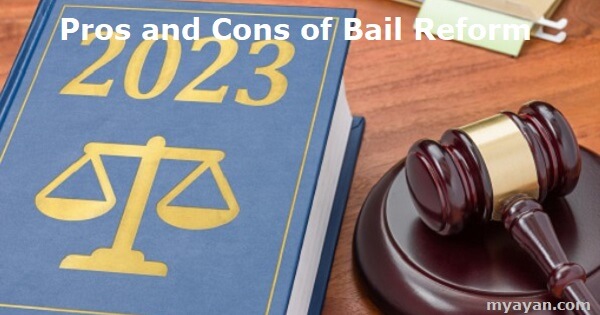Bail reform is the term used to describe modifications made to the current bail system to ease certain problems and inequalities. Bail reform seeks to provide a more fair and reasonable system that considers the financial means of offenders and their potential threat to public safety.
1. Risk-based Evaluation: In this strategy, a risk assessment tool assesses the possibility that a defendant would fail to appear in court or conduct more crimes. Based on this evaluation, the court determines the appropriate level of bail, with higher-risk offenders being detained without bail and lower-risk defendants being released on bail or with non-monetary restrictions.
2. Elimination of Cash Bail: In certain jurisdictions, all kinds of bail have been abolished and replaced by other conditions for release, such as recognizance or non-monetary ones.
3. Pretrial Services: In certain jurisdictions, offenders released on bail or other non-cash conditions get pretrial services, including monitoring, counseling, and drug testing.
4. Reducing Recidivism: Several governments and private organizations have created bail funds to assist low-income offenders in posting bail and avoiding pretrial imprisonment.
5. Community-based Options: Some jurisdictions have put community-based alternatives to pretrial confinement, such as supervised release plans, home detention, and electronic monitoring.
The topic of bail reform is complicated and calls for a comprehensive strategy. It's crucial to consider the civil freedoms, fair treatment, and requirements for the public safety of the accused. It's crucial to assess the reform's effects and make any required modifications.
Bail reform can lessen the number of persons kept in jail pending trial, which can assist in easing congested jails and enhance circumstances for detainees.
Bail reform, which considers defendants' financial resources and potential risk to public safety, can assist in minimizing racial and socioeconomic inequalities in the criminal justice system.
Bail reform can increase public safety by holding suspects who represent a threat to the neighborhood in jail while they await trial.
Bail reform may be less expensive than the existing system since it enables offenders to sustain themselves and their families. At the same time, they await trial instead of being an economic burden on the state.
By offering offenders support services like counseling and drug testing, which can assist in addressing the underlying issues that resulted in their detention, bail reform can help to reduce recidivism.
By allowing offenders to be freed based on risk rather than financial means, bail reform can result in a more equitable and just system.
According to some opponents, bail reform might endanger the public by releasing offenders who threaten the neighborhood without enough supervision or restrictions.
Bail reform procedures like the release of recognizance may not hold criminals accountable if they skip court or commit new offenses.
Bail reform initiatives like risk-based assessment instruments and pretrial services could not be universally accessible in all jurisdictions, which might limit their efficacy.
Bail reform may be challenging since it calls for alterations to the legal system and may necessitate more financing and resources.
Some bail substitutes, such as electronic monitoring or home confinement, may not be appropriate for all offenders and result in more freedom limitations.
The bail bond industry may oppose bail reform because it can lose money if cash bail is reduced or eliminated.
If bail reform is improperly implemented, it may increase racial inequalities or higher recidivism.
Conclusion
Bail reform is a complicated topic. Therefore it's critical to assess its effects and make any required revisions. Civil freedoms, fair treatment, and requirements for the accused's public safety must all be considered.
Resistance from the Bail Industry: The bail bond industry may oppose bail reform because it can lose money if cash bail is reduced or eliminated.
Risk of Unintended Consequences: If bail reform is improperly implemented, it may increase racial inequalities or higher recidivism.

The goals of New York's bail reform statute were to decrease pretrial incarceration, minimize racial inequities, restrict the role of money in determining whether persons can obtain their freedom while innocent of a crime, and protect public safety.
The charge, the type of evidence used to support it, and the punishment the defendant would face if found guilty must all be considered while deciding whether to grant bail.
There are large regional variations in court costs and bail levels in India. For instance, in Rajasthan, the bail sum for a non-bailable offense might be as low as $10,000, yet it can be as high as 2 lakhs in Delhi. Court costs might also vary based on the state and the nature of the case.
Your variety of payment alternatives when utilizing bail bonds is its major advantage. If a person cannot now afford the bail sum, they are most likely to use a bail bond. You can employ a bail bond company to collect the cash you require upfront rather than allowing a loved one to remain in jail.